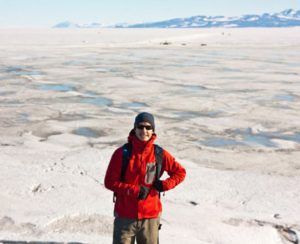By Paul Kieniewicz

A common argument voiced in the media and by many global warming sceptics, is that even if global warming is real, if human sourced carbon dioxide emissions are the cause of it, then the process has gone far beyond the point of no return. Whatever we do now to control our greenhouse gas emissions is unlikely to make any significant difference. The damage is done and there’s nothing we can do about it. Therefore, why sweat the issue? Why risk damaging the world’s economy when the result will be the same? International Paris talks? A waste of time.
Not so fast. A recent study by Geophysicists from Woods Hole Oceanographic Institute and the University of Utrecht, published in Nature Geophysics, suggests that what we do now can certainly make a difference. By controlling greenhouse gas emissions we can choose between a rapidly melting Antarctic ice cap and the associated sea level rise, or stabilize the ice melting in the Antarctic.
The study combines all available oceanographic data, satellite data and temperature predictions. Models show that under all scenarios Antarctic ice melting increases between now and 2050. But depending on whether we cut greenhouse gas emissions now or continue business as usual, the world after 2050 may be quite different. Either the Antarctic ice will stabilize, or it will continue melting at an accelerating rate. What we decide to do now as a world community certainly matters.
Many electorates and politicians whom they elect are likely to say — “2050? I’ll be dead by that time. Let my grandkids worry about those problems.” However the Antarctic study shows that now is the time to decide what sort of world our grandchildren will inhabit. Will it be the benign, biodiverse world we have now, or the nightmarish scenario of many science fiction films such as Waterworld?
